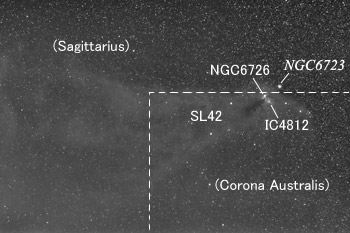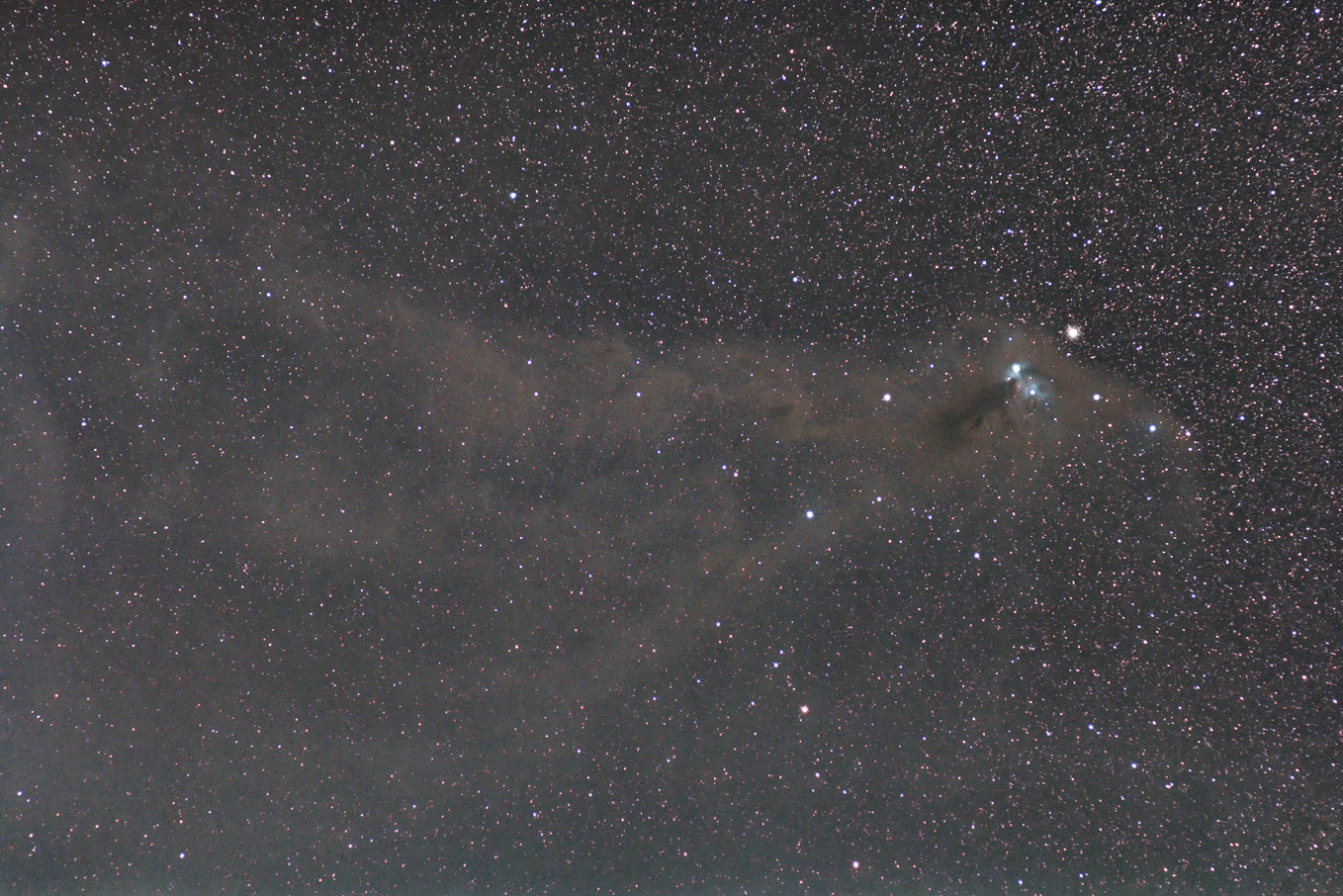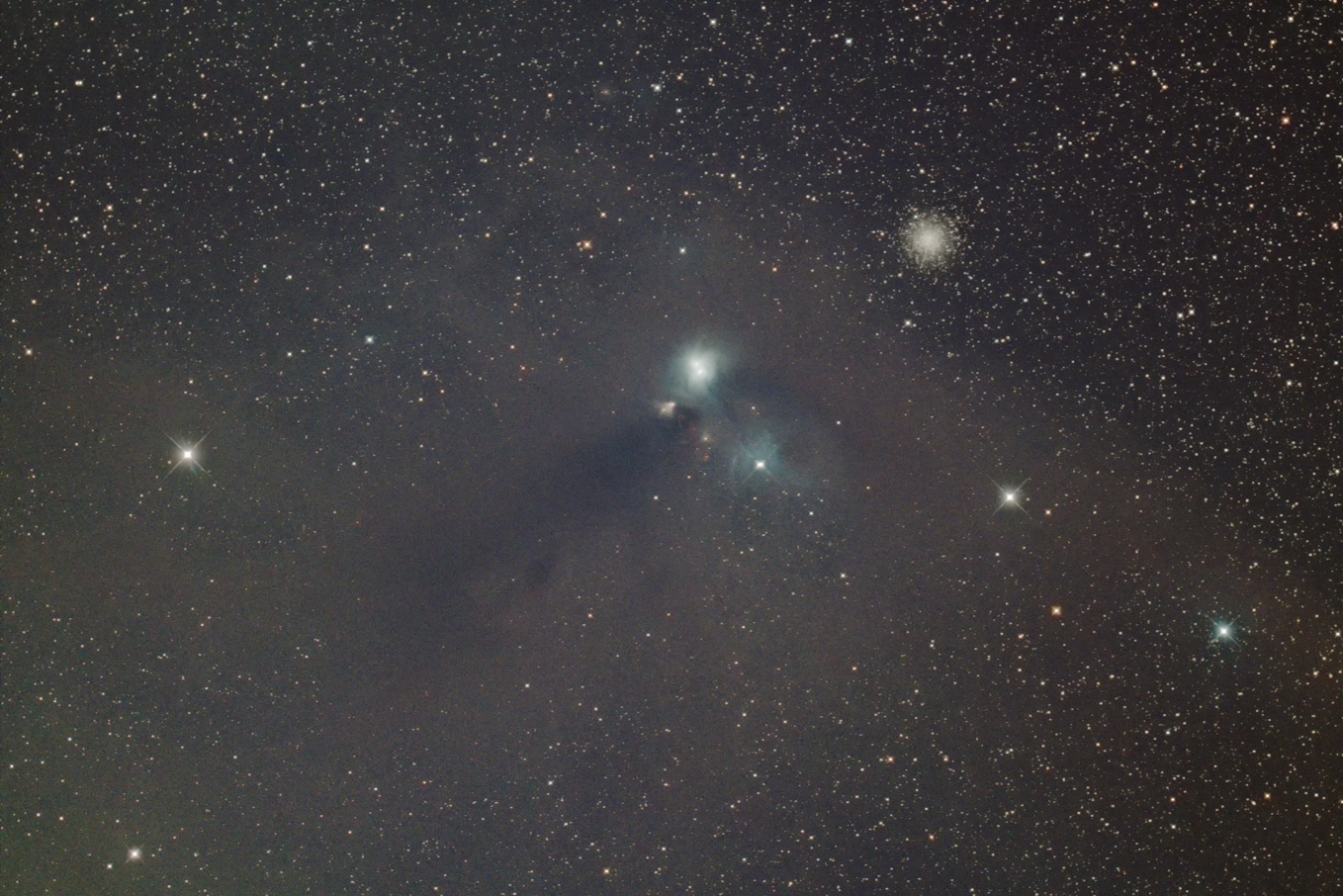Deep Sky Object in Summer
IC4812 & surrounding molecular cloud (Corona Australis)
Click on image to enlarge
| Date & Time: | Jun 16 2023, from 24:19 to 25:38 JST(+0900) |
| Composed 14 shots with 6 minutes exposed |
| Optical: | AF zoom-Nikkor 80-200mmF2.8ED (f=135mm, stop: F4.0) |
| with IDAS LPS-D1 Light-pollution suppression filter |
| Auto-guided with TAKAHASHI EM-200 Equatorial |
| CMOS Camera: | ZWO ASI2600MC Pro (Cooled temp.: -15°C) |
| Location: | Koumi town, Nagano pref. |
| Camera Settings: | Recording format...16bit FITS, converted to 16bit TIFF(6248×4176) |
| Device Size...23.5×15.7mm, Gain...100 |
| IC4812 / Reflection Nebula, type R |
|---|
| R.A. | 19h 01m 06.6s (2000.0) |
|---|
| Dec. | -37°02' 20" (2000.0) |
|---|
| Apparent Size | 6.0' |
|---|
| Real Size | N/A |
|---|
| Magnitude | - |
|---|
| Distance | N/A |
|---|
|
| NGC6726 / Reflection Nebula, type R |
|---|
| R.A. | 19h 01m 42.0s (2000.0) |
|---|
| Dec. | -36°53' 00" (2000.0) |
|---|
| Apparent Size | 5.0' |
|---|
| Real Size | N/A |
|---|
| Magnitude | - |
|---|
| Distance | N/A |
|---|
|
A reflection nebulae IC4812 and NGC6726, located at the northernmost tip of the constellation Corona Australis, reflect or ionize the surrounding dark nebula, emitting light due to the nearby stars' illumination.
Actually, the dark nebula spreads out in a fan shape over 10 degrees in the eastern direction, reaching into the territory of Sagittarius.
It is challenging to capture the nebula in Japan due to their low altitude during transit, but it is possible to capture the overall triangular-shaped molecular cloud to some extent.
Although not very common, the nebula is sometimes referred to by the nickname "Anteater Nebula" due to its shape.
A globular cluster NGC6723 belonging to Sagittarius can be seen just north of the reflection nebulae.
 |
Deepsky objects around Crona Australis
Italic indicates ID of globular clusters |
|
Click on image to enlarge
Close-up around IC4812 & NGC6726
| Date & Time: | Jul 1 2022, from 22:58 to 23:39 JST(+0900) |
| Composed 6 shots with 8 minutes exposed |
| Optical: | TAKAHASHI 16cm(6.3") epsilon (f=530mm, F3.3) |
| with IDAS LPS-D1 Light-pollution suppression filter |
| Auto-guided with TAKAHASHI EM-200 Equatorial+Lacerta M-GEN |
| CMOS Camera: | ZWO ASI2600MC Pro (Cooled temp.: -10°C) |
| Location: | Furudono town, Fukushima pref. |
| Camera Settings: | Recording format...16bit FITS, converted to 16bit TIFF(6248×4176) |
| Device Size...23.5×15.7mm, Gain...100 |


